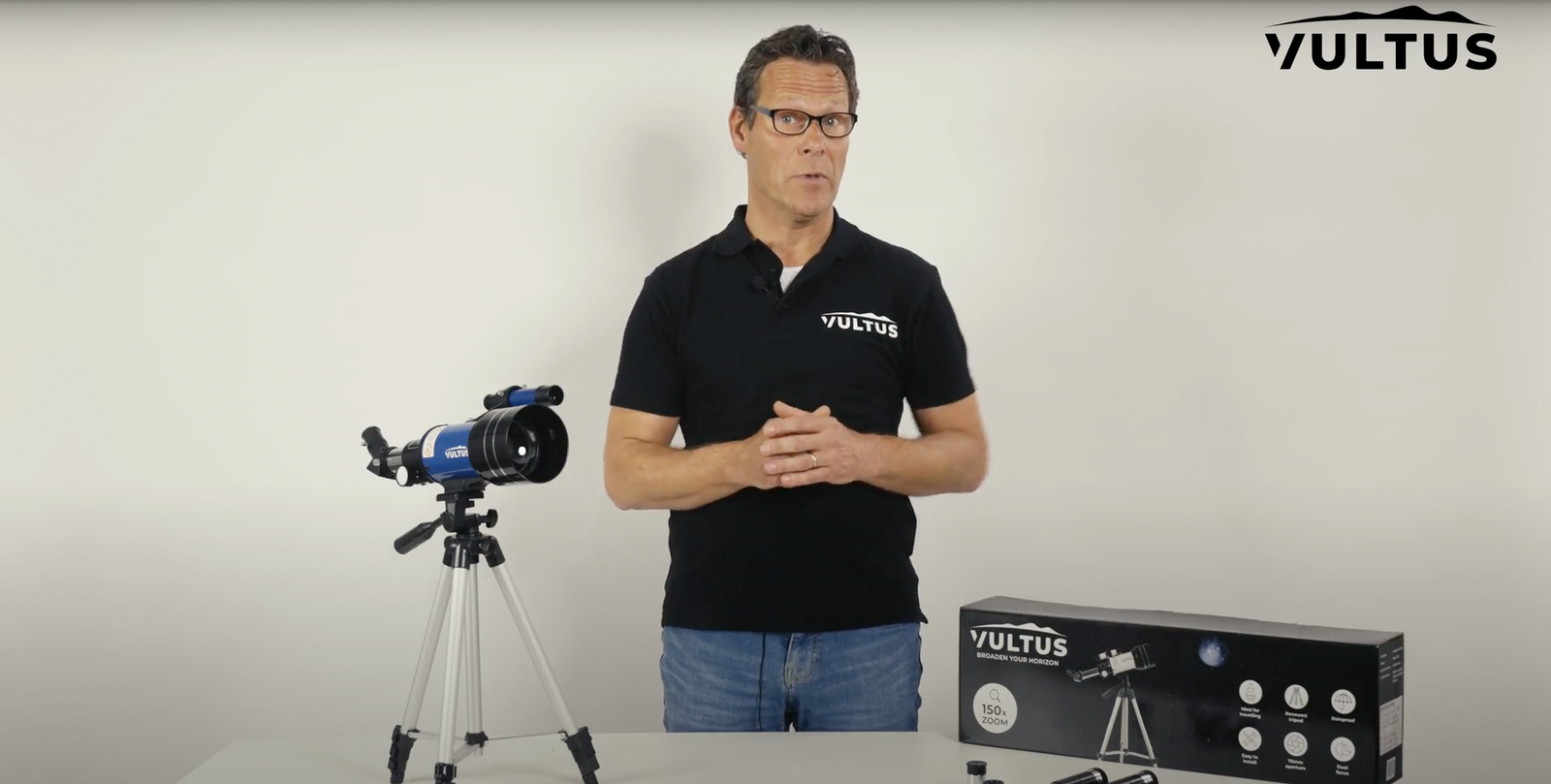Specifications of the optics in the telescope

A telescope has many different characteristics, which is why we have divided them here into optical and other characteristics. To familiarize you with the optical characteristics of a telescope, we would like to explain the influence of the diameter of the objective on the image. Or how the focal length affects the final magnification. This allows you as an astronomer to form a better idea of what you want.
Objective diameter
The objective is the primary lens or mirror of a telescope and determines how much light the telescope can collect. The lens contributes to the clarity of the image. The larger the objective, the more light enters the telescope. This makes your image clearer and allows you to see further. You are more likely to suffer from light pollution. When buying a telescope, it is therefore important to keep in mind what you want to observe with the telescope. Based on this you can determine how large the objective should be and which type of telescope is suitable for it.
Focal length
The focal length is the distance that light must travel to converge on one point (the focal point). The focal length is important. As described earlier, the magnification partly depends on this. Often the greater the focal length, the higher the magnification can be. The focal length is not necessarily linked to the length of the telescope tube. Catadioptric telescopes bounce the light a few times before it reaches the eyepiece. This ensures that there is a large focal length, with a relatively short tube.
Magnification
A common beginner's mistake is choosing a telescope based on its magnification. However, the magnification itself has nothing to do with the optical performance of a telescope.
When enlarging images, a telescope uses a combination of lenses. The final magnification is determined by the focal length of the telescope itself, in combination with the focal length of the eyepiece. The problem here is that the higher the magnification, the smaller the field of view becomes and the lower the brightness of the image becomes.
The rule we apply is that the maximum meaningful magnification of a telescope is 2x the diameter (in millimeters) of the lens or mirror. For example: if a telescope has a lens diameter of 114 millimeters, then the maximum meaningful magnification is 228x. At a higher magnification the quality of the image decreases considerably. In addition, most astronomical objects are best viewed at low magnification. This way the most light can be captured.




Leave a comment